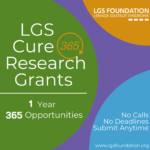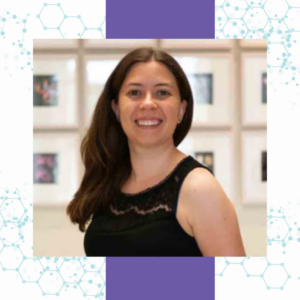2017 Grant Recipient – Vanesa Nieto-Estevez
Modeling Lennox-Gastaut Syndrome in Human Cerebral Organoids
Vanesa Nieto-Estevez, PhD
UT Southwestern Medical Center
Results: Pending
Lay Abstract:
Lennox–Gastaut syndrome (LGS) is a devastating epileptic encephalopathy in children characterized by multiple seizure types and impaired intellectual development. Thirty percent of LGS cases are preceded by infantile spasms. While 70-80% of cases have a known cause, there are many patients who have unknown etiology. Nevertheless, recent advances in genomic technologies such as array CGH or DNA sequencing have identified de novo mutations in genes, such as CHD2 and ALG13, in patients with either infantile spasms or LGS 2-5. Understanding the mechanisms by which these mutations contribute to epileptogenesis may help define the underlying biology of LGS and ultimately impact treatment. I have taken a promising new approach to generate “epilepsy-in-a-dish” models from gene edited human embryonic stem cells/induced pluripotent stem cells (ESC/iPSCs) for mechanistic and therapeutic discovery. My preliminary data shows CHD2 expression in cerebral organoids (a 3D model of human brain development in a dish) as well as adult human hippocampus and cortex. Moreover, CHD2 expression co- localized with the neuronal marker NeuN and increased during cerebral organoid differentiation, suggesting a role of CHD2 in neuronal maturation. In line with these data, animal models have shown that suppression of Chd2 expression inhibits the self-renewal of radial glial cells and increases the generation of intermediate progenitor cells and neurons in the developing cortex. These preliminary data helped to formulate my central hypothesis: that CHD2 is essential for proper neuronal maturation in human brain and disruption of this process leads to development of LGS. I will test our central hypothesis by pursuing the following specific aims:
Aim 1: Determine the effect of CHD2 deletion in GABAergic and glutamatergic neurons
Using CRISPR-Cas9, I have generated a line of human ES cells lacking CHD2 expression. To determine whether the lack of CHD2 produces an imbalance between excitation and inhibition in neurons, which could correlate with the abnormal EEG observed in LGS patients, I will differentiate control and CHD2 KO cells into GABAergic and glutamatergic neurons in two-dimensional culture. I will analyze different subtypes of neurons as well as their dendritic and spine morphology through immunostaining using specific antibodies (Aim1a). In addition, I will use a Multi-Electrode Array (MEA) system and viral infection using a GCaMP- expressing lentivirus to evaluate the electrophysiological activity of the neurons (Aim1b and Aim1c). Completion of Aim 1 will determine the role of CHD2 in a homogenous population of neurons.
Aim 2: Define the role of CHD2 in cerebral organoids derived from KO ES cells
Building on my co-first author Development publication of a 3D model of human brain development, I will test whether mutations in CHD2 gene affect cerebral organoid growth, neuronal differentiation and maturation. I will grow cerebral organoids from control and CHD2 KO cells using protocols that mimic the different steps of brain development. To analyze cell identity (Aim2a), I will perform immunostaining against specific antibodies for stem and progenitor cells as well as GABAergic and glutamatergic neurons. To analyze the neuronal morphology (Aim2b), I will infect cells using lentivirus expressing a fluorescent reporter gene (GFP). To evaluate neuronal activity, we will infect cerebral organoids with a GCaMP- expressing lentivirus as well as use the MEA system to measure network activity (Aim2c). Completion of Aim 2 will determine the role of CHD2 in a 3D organoid model of human brain development.
Aim 3: Identify the molecular mechanism of CHD2 in seizure development
To determine whether the cellular phenotype of CHD2 is seen in patients with LGS, we will establish human iPSCs and differentiate them into neurons and cerebral organoids (Aim3a). In collaboration with Drew Thodeson MD, pediatric epileptologist and clinician-scientist in our lab, we will recruit patients with pathogenic CHD2 mutations to correlate patient phenotype and experimental findings. To identify the molecular mechanism underlying CHD2 mutations, I will perform chromatin immunoprecipitation and transcriptome analysis in control and CHD2 KO cells (Aim3b). This information will help in the selection of targets to rescue the phenotype observed in CHD2 KO cells (Aim3c). Completion of Aim 3 will identify therapeutic targets which could be used for drug testing.
In summary, by studying neurons/organoids derived from gene edited human ESC/iPSCs, I aim to determine the causal relationship between CHD2 mutations and the patient phenotype. I anticipate these studies have the potential to gain novel insight regarding the causes of LGS, which could lead to new therapeutic strategies.
 The LGS Foundation accepts unsolicited proposals year-round to seed new basic, translational, and clinical research projects on LGS. Projects may be funded at the $25,000, $50,000, or $75,000 level.
The LGS Foundation accepts unsolicited proposals year-round to seed new basic, translational, and clinical research projects on LGS. Projects may be funded at the $25,000, $50,000, or $75,000 level.
Updated 01/09/25 (KK)

